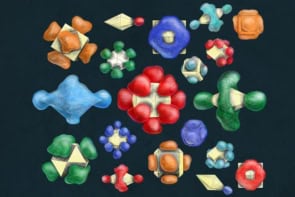Carbon might be used to make computer memory elements in the future according to simulations by researchers at Michigan State University in the US and NEC in Japan. They have modelled the behaviour of a charged carbon-60- potassium "bucky shuttle" inside a nanocapsule made of 480 carbon atoms. The bucky shuttle can be moved from one end of the nanocapsule to the other by an electric field, thus mimicking the binary behaviour needed for computer memory chips (Phys. Rev. Lett. 82 1470).
Buckyballs, nanotubes and related structures have great potential for storage applications because their small size offers the possibility of high switching speeds and low power consumption. However, the unusual conducting properties of nanotubes have made it extremely difficult to construct devices. The Michigan-NEC team realised that inserting a positive ion into the buckyball made it easier to locate its position inside the nanocapsule. Moreover, the bucky shuttle remains fixed at one end of the nanocapsule because of weak van der Walls and covalent forces. However, a electric field is strong enough to break these bonds and push it to the other end. The whole process takes less than 10 picoseconds – which is four orders of magnitude faster than current magnetic storage devices.



